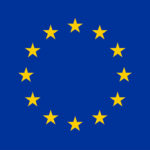Session 1
Natural control of a lower-limb exoskeleton: using upper-body kinematics to detect gait initiation intention
Omar Mounir Alaoui, Wandercraft and Sorbonne University, France — Fabien Expert, Wandercraft, France — Guillaume Morel, Sorbonne University, France — Nathanaël Jarrassé, Sorbonne University, France.
PROUD: A hybrid model-based/learning approach for symbolic-level robot programming by user demonstration
Joris De Winter, Vrije Universiteit Brussel, Belgium — Cristian Alejandro Vergara Perico, KU Leuven, Belgium — Elahe Bagheri,Vrije Universiteit Brussel, Belgium — Yudha Pane, KU Leuven, Belgium — Erik Hostens, Flanders Make, Belgium — Erwin Aertbeliën, KU Leuven, Belgium — Bram Vanderborght, Vrije Universiteit Brussel, Belgium — Wilm Decre, KU Leuven, Belgium.
Controlling robotic assistive devices with natural body compensations
Mathilde Legrand, Sorbonne University, France — Nathanaël Jarrassé, Sorbonne University, France — Guillaume Morel, Sorbonne University, France.
IMU-based motor intent decoding with full kinetics information
Chunzhi Yi, Harbin Institute of Technology, China — Kai Yang, Harbin Institute of Technology, China — Feng Jiang, Army Air Force Academy, China — Chifu Yang, Harbin Institute of Technologyy, China.
Session 2
Online phase speed estimation of human motion using a moving horizon estimator
Thomas Callens, KU Leuven, Belgium — Tuur van der Have, KU Leuven, Belgium — Sam Van Rossom, KU Leuven, Belgium — Joris De Schutter, KU Leuven, Belgium — Erwin Aertbeliën, KU Leuven, Belgium.
The effect of vision on the augmentation of perceived stiffness by adding Aatificial skin stretch to kinesthetic force
Mor Farajian, Ben-Gurion University of the Negev, Israel — Raz Leib, Ben-Gurion University of the Negev, Israel — Ilana Nisky, Ben-Gurion University of the Negev, Israel.
It is not likely that tactile and kinesthetic information are integrated according to maximum-likelihood
Hanna Kossowsky, Ben-Gurion University of the Negev, Israel — Mor Farajian, Ben-Gurion University of the Negev, Israel — Ilana Nisky, Ben-Gurion University of the Negev, Israel.
Evaluation of a new control law improving the transparency of an exoskeleton
Dorian Verdel, Université Paris-Saclay, France — Simon Bastide, Université Paris-Saclay, France — Nicolas Vignais, Université Paris-Saclay, France — Olivier Bruneau, Université Paris-Saclay, France — Bastien Berret, Université Paris-Saclay, France.
Session 3
Towards establishing a ‘cooperation’ measure for coupled movement in close-proximity human-robot interaction
Antonella Camilleri, University of West of England, UK — Jun Hong, University of West of England, UK — Sanja Dogramadzi, University of Sheffield, UK — Praminda Caleb-Solly, University of West of England, UK.
Individual differences and the sense of embodiment: looking for a correlation in a out-of-body experience
Sara Falcone, University of Twente, The Netherlands — Saket Pradhan, University of Twente, The Netherlands — Jan van Erp, TNO, The Netherlands — Dirk Heylen, University of Twente, The Netherlands.
Capturing attention with wind
Natalie Friedman, Samsung AI Center, Canada — David Goedicke, Samsung AI Center, Canada — Vincent Zhang, Samsung AI Center, Canada — Dmitriy Rivkin, Samsung AI Center, Canada — Michael Jenkin, Samsung AI Center, Canada — Ziedune Degutyte, Samsung AI Center, UK — Arlene Astell, Samsung AI Center, UK — Xue Liu, Samsung AI Center, Canada — Gregory Dudek, Samsung AI Center, Canada.
Passive gait synchronization of human-robot systems using a dynamically coupled double rimless wheel model
Daniel J. Gonzalez, United States Military Academy, USA — H. Harry Asada, Massachusetts Institute of Technology, USA.
Trust learning for initiating physical human-robot interaction
Juyoun Park, The George Washington University, USA — Chung Hyuk Park, The George Washington University, USA.




